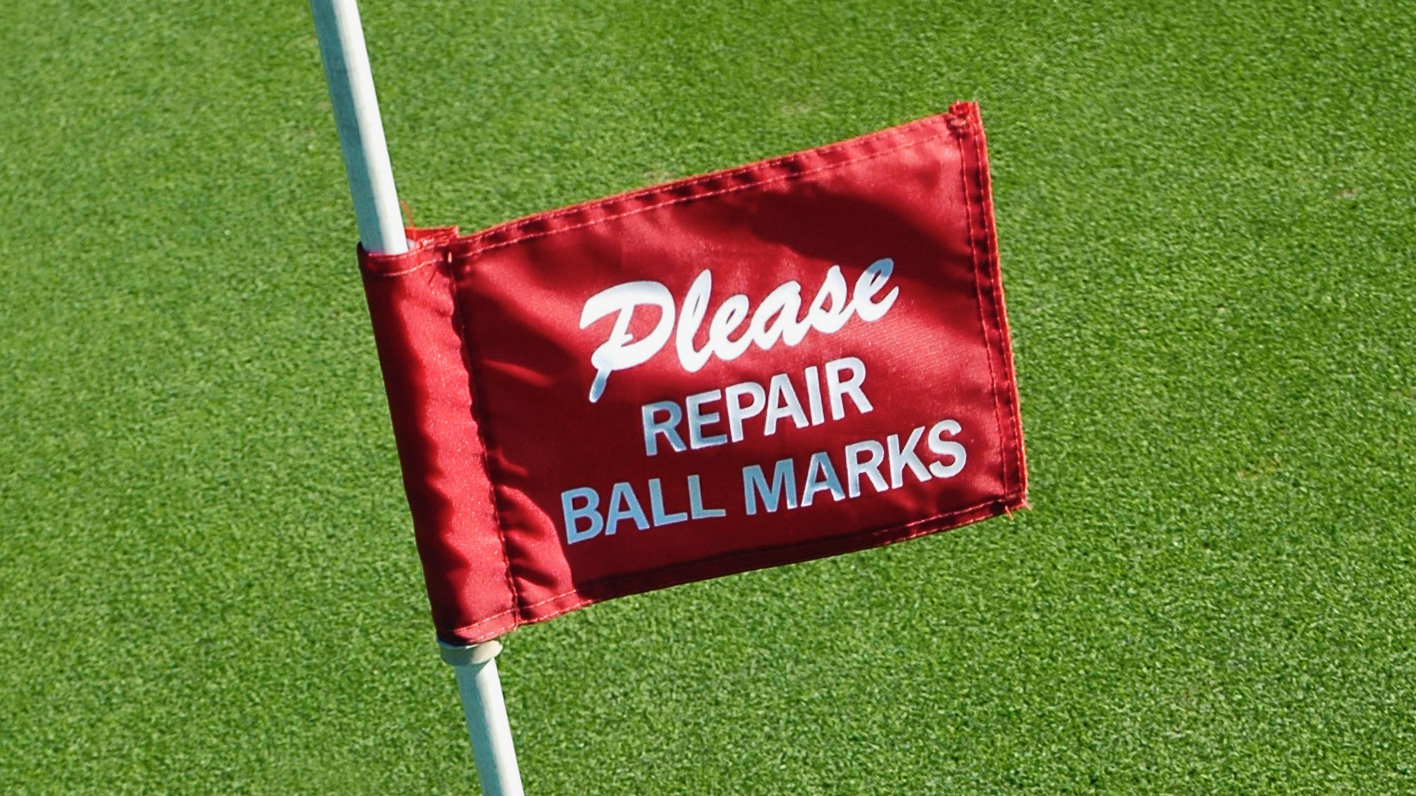
‘Etiquette’ may seem a slightly outdated notion these days, which is perhaps why the rulemakers decided to drop the word when major revisions to the Rules of Golf were introduced in 2019. But though the word may be gone, the principles of good ‘etiquette’ remain the same. Rule 1.2 in the book covers ‘Standards of Player Conduct’ and talks about playing within the spirit of the game, acting with integrity, showing consideration to others and taking good care of the course.
Here, we highlight a number of things to try and avoid when playing golf out of respect and consideration both to other players and those who prepare the courses for us to play…
Not getting your round in
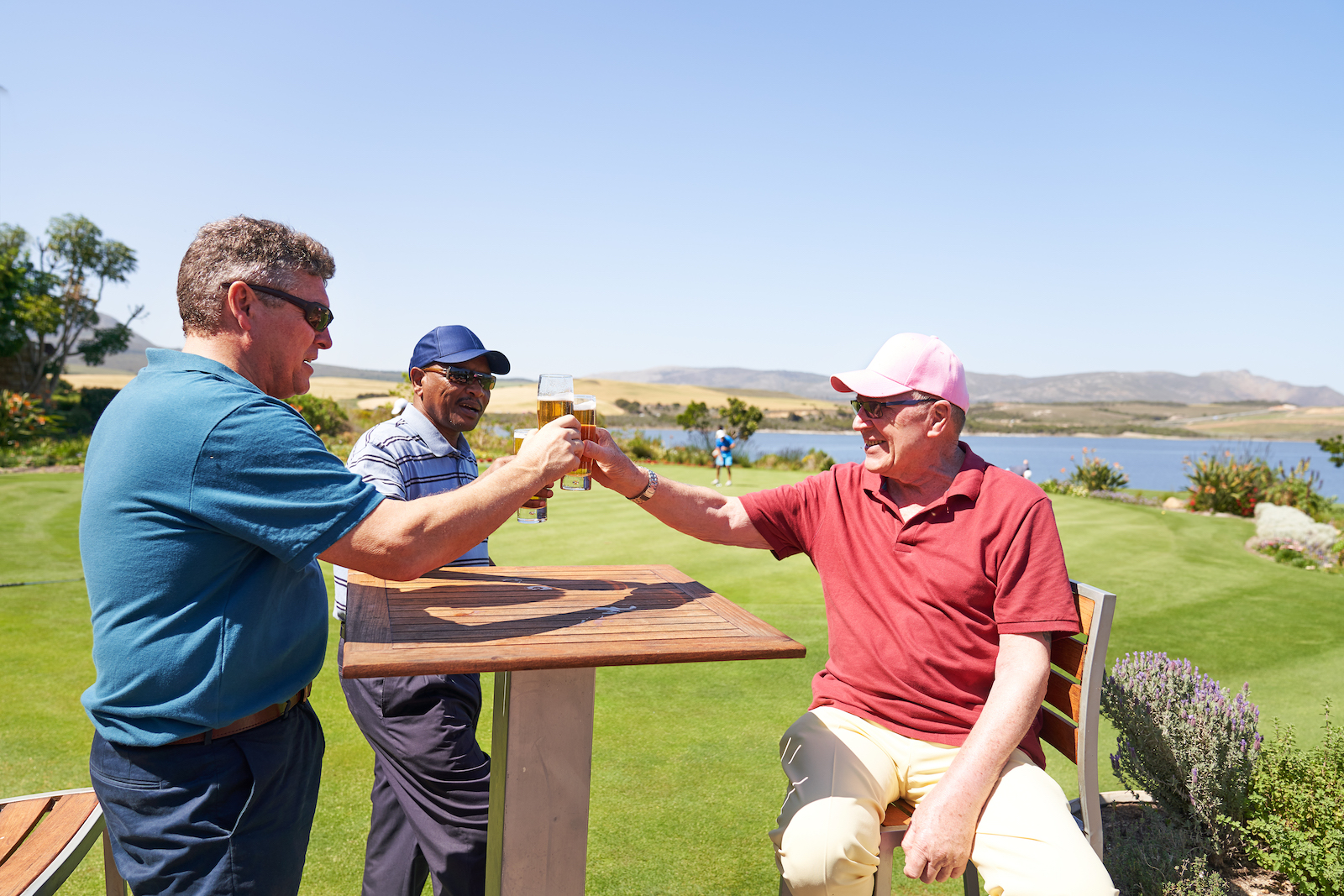
Okay, this isn’t about on-course etiquette but just a generally accepted practice post-round in the clubhouse. If you’ve just been beaten in a match, however frustrated and disappointed you are with your performance, it’s good form for the loser to get the first round of drinks in. If you tend to be a “short arms, deep pockets” kind of golfer, you’re likely to very quickly run out of people keen to play with you. So do the right thing – congratulate them and buy the first round.
Not ringing the bell
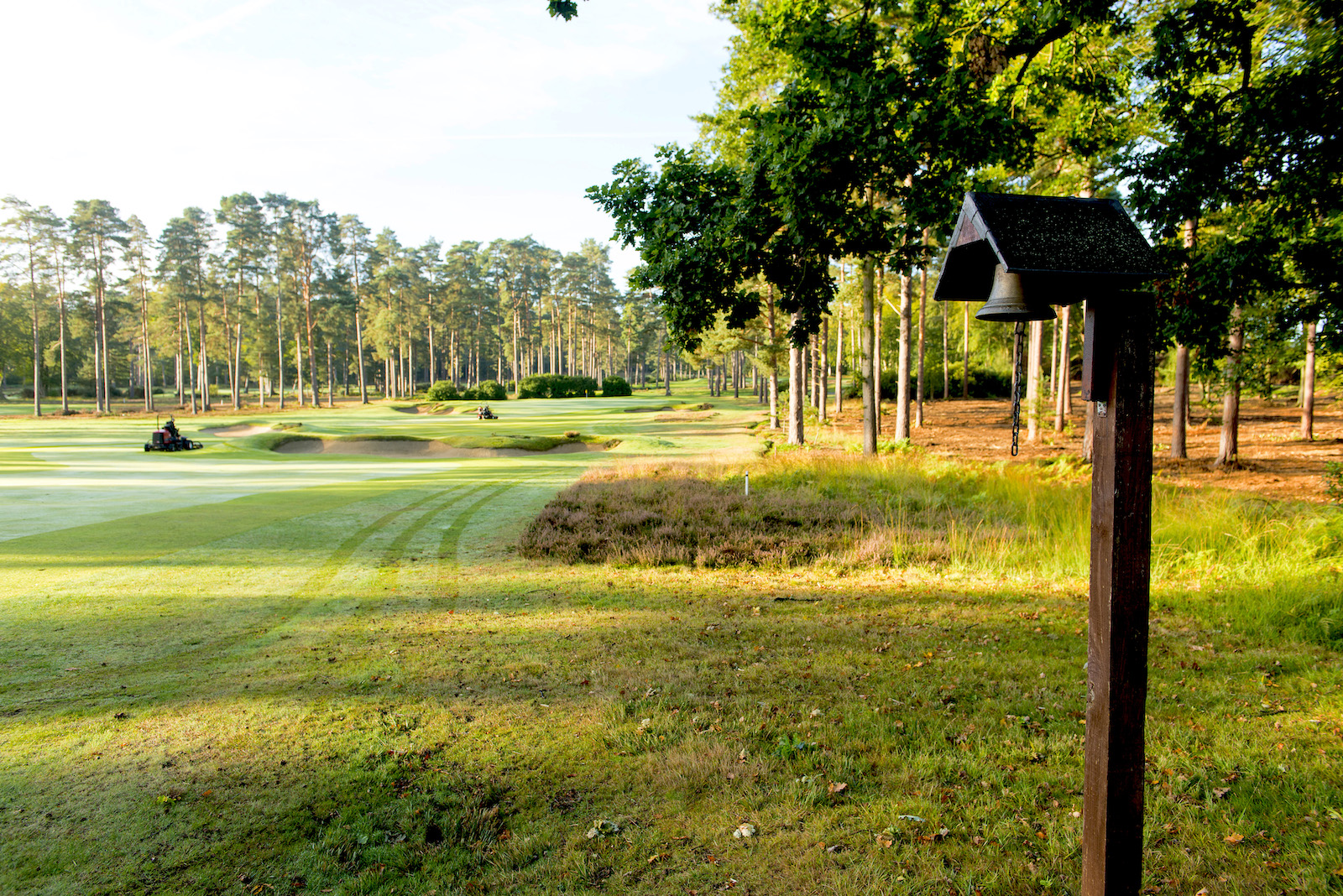
Some golf holes that play blind or semi-blind over a hill or around a dogleg have bells beside the fairway for you to ring after you’ve played your second shot to tell those behind that it is now clear to tee off. Failure to ring the bell means that those behind have no idea when it’s safe to drive leading to unnecessary delays, frustration and ill-feeling. Whenever there’s a bell on a golf hole for safety purposes, always remember to ring it on your way past.
Driving when players ahead are still in range

There are two potential scenarios here – first, when you’re genuinely not sure if those ahead are out of range or you could perhaps reach the green on a short par 4 (like the 16th here at Marco Simone); and second, when you're getting frustrated about the speed of play and decide to take it out on the group ahead by deliberately firing into them. The latter is an obvious no-no as a golf ball is a rock-hard missile. As for the former, never play until you’re absolutely sure there’s no way your ball can reach those playing ahead of you.
Not attending the flagstick for someone
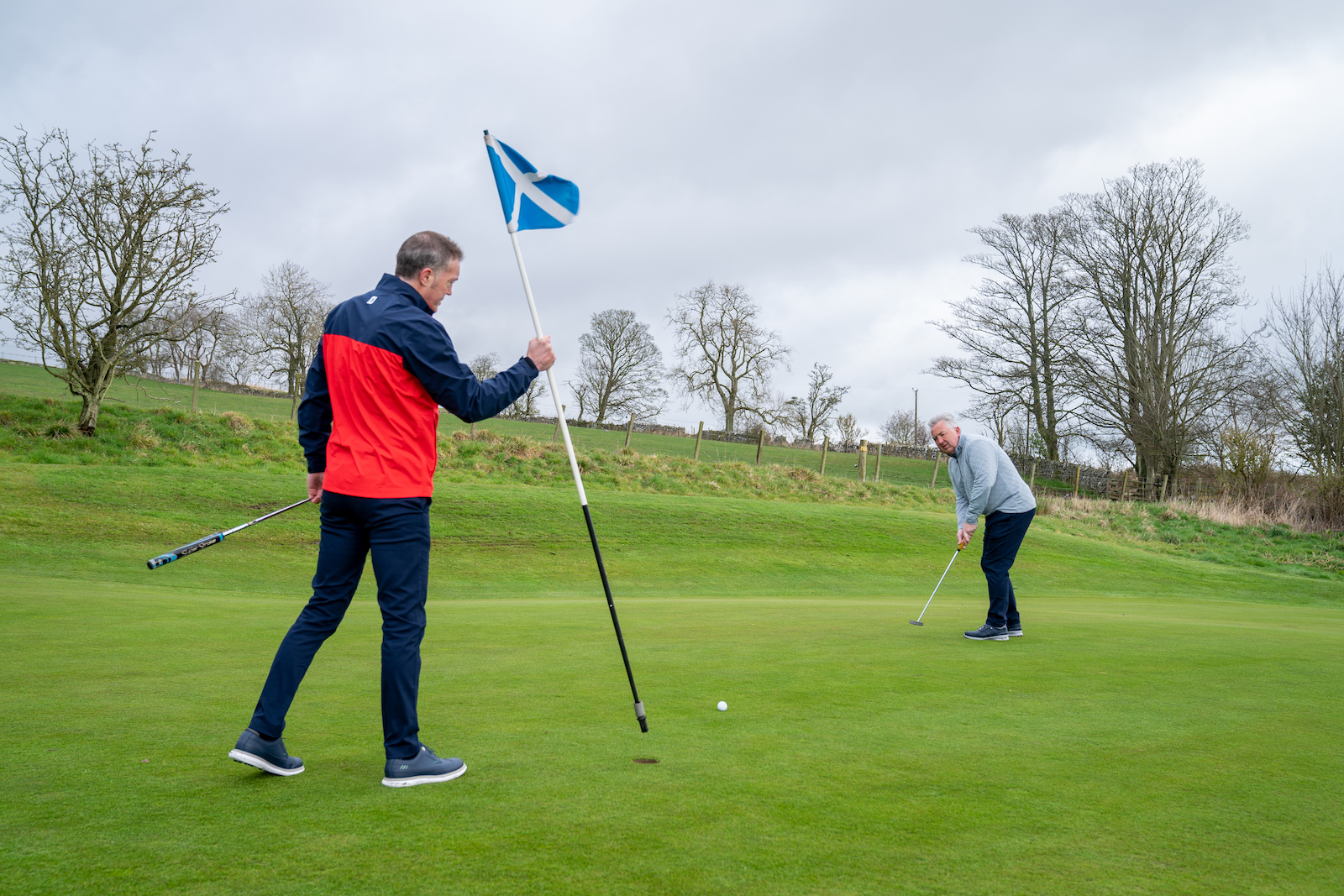
Yes, under the latest Rules you can now putt with the flagstick in, but some golfers do still prefer for someone to attend the flagstick for them on longer-range putts. It’s no great hardship to do so for them just as you might hope they would do for you if you were to ask them, even if the Rules don’t actually compel another player to attend the flagstick for someone. As with many etiquette-related matters, it’s just a matter of common courtesy really.
Standing too close behind someone

It’s always a good idea not to invade another golfer’s personal space out on the golf course, and the last place most golfers want another player lurking is right behind them while they're hitting, especially if they stray unnervingly close. This is particularly true on the putting green where anyone standing close behind can be a real distraction, but also on the tee and other shots too. Standing or hovering too close behind someone as they play is poor practice and an etiquette mistake to avoid.
Getting so angry it impacts others

We all have different temperaments and behave differently. While quieter golfers may not be the most chatty companions, that doesn’t really impact on those they’re playing with. But the more volatile golfer who tends to erupt verbally or physically at bad shots or ill fortune can be a very uncomfortable playing companion as others don’t know what to say, or feel like they’re having to walk on eggshells. Be considerate to those you’re playing with and don’t let your temper sour their experience.
Playing or walking too slowly

Golfers possess different traits, different levels of fitness and cover a wide age range. Some have a sense of urgency; others operate at a more leisurely pace. While golf is not a race, there has to be some kind of balance, and some golfers do tend to amble along oblivious to what’s going on around them rather than walking at the pace required to keep up. If you can see you’re losing ground, a slightly brisker pace may be required to prevent your group holding up those behind.
Allowing your shadow to distract someone
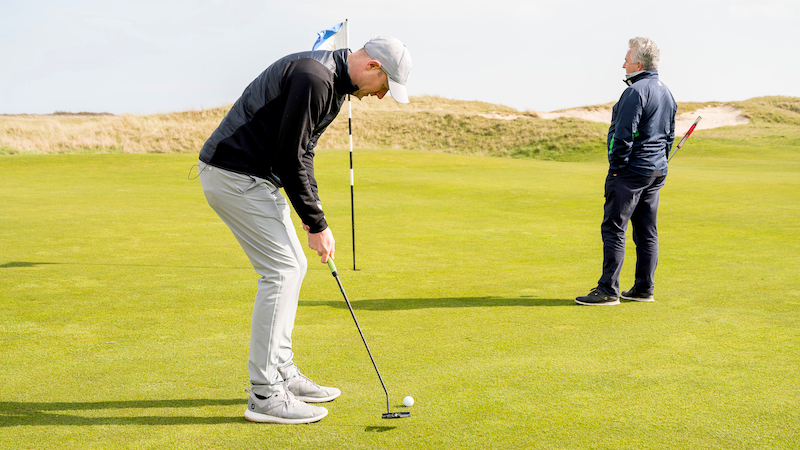
In bright, low sunshine, the shadows generated by you and your equipment can stretch a long way, so you need to make sure your shadow isn’t distracting someone else trying to play. This is particularly the case on the green but also on the tee, when players are typically standing closer together. A flickering shadow in your eyeline can be very off-putting especially as any little movements, perhaps with a club, become exaggerated when the shadows are long.
Rummaging for a ball while someone is preparing to hit
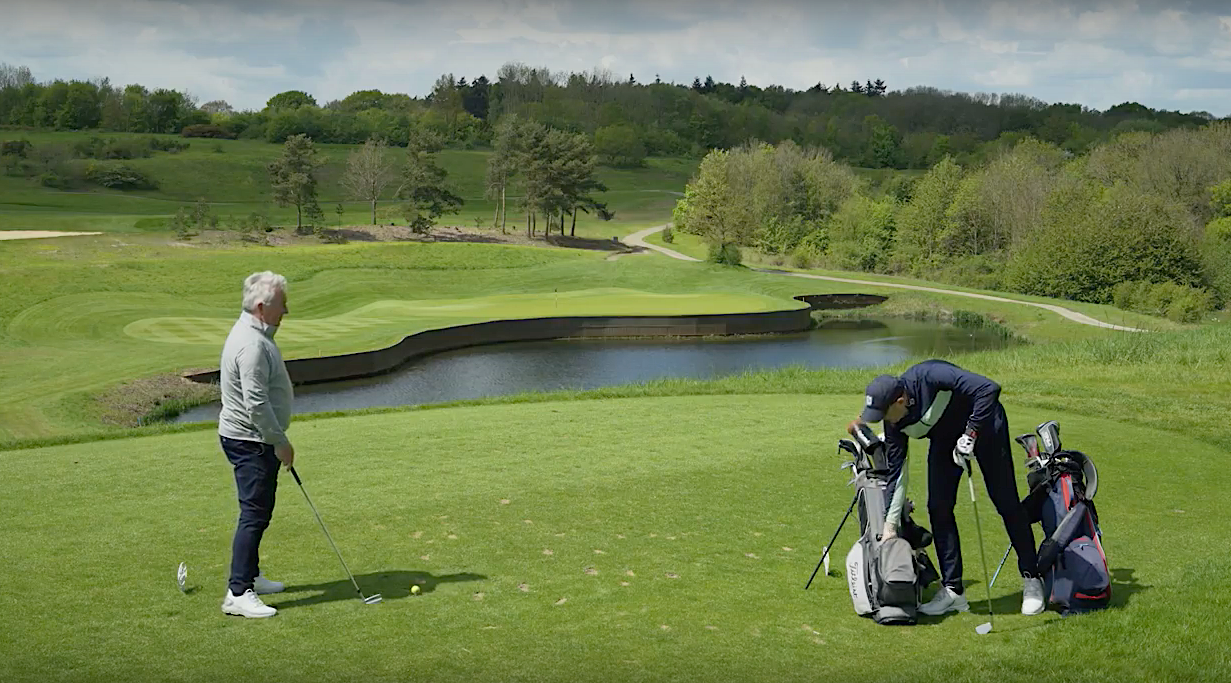
You’ve just sprayed your tee shot deep into the woods and fear you may never see it again so know it would be wise to hit a provisional ball. But in your agitated, slightly panicky state it can be all too easy to start rummaging around in your bag for another ball straightaway oblivious to the fact that another player is now on the tee and preparing to hit. Bide your time and let them play free from distractions before rifling through your bag for another ball.
Leaving ringtones and alerts on
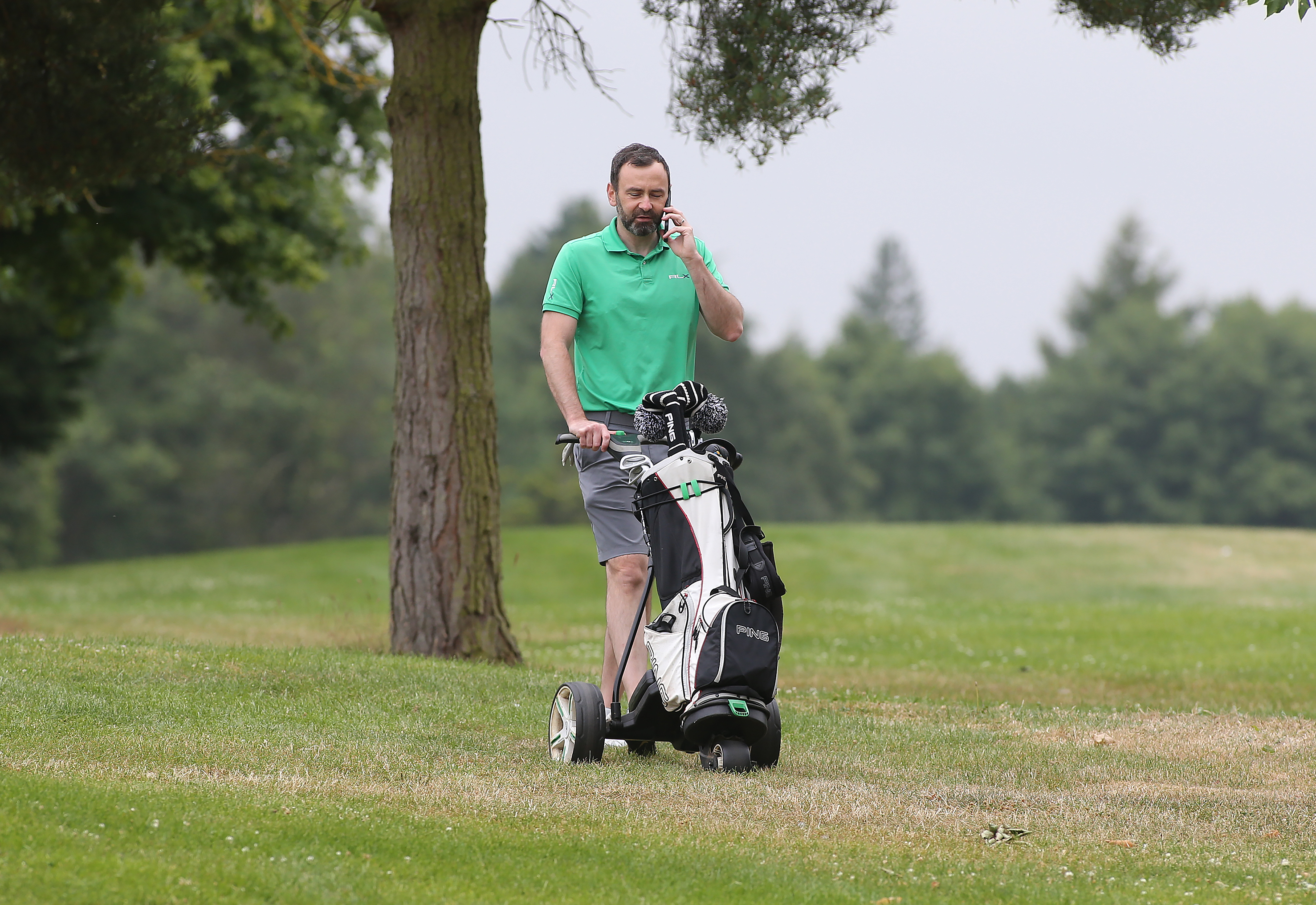
Some might say that golfers are too fragile and easily distracted. While there may be an element of truth in this, there’s no doubt that all golfers will at some stage have been distracted by an unexpected noise at the critical moment causing them to flinch and mishit a shot. One of the most obvious distractions these days is a mobile ringtone or alert, so always make sure your phone is set to silent out on the course to ensure it doesn’t have the capacity to put a fellow player off.
Not hitting a provisional ball

Rule 18.3 specifically allows you to follow a procedure that keeps delays to a minimum when you’ve hit your ball offline, yet golfers often spurn the chance to do so for various reasons. In a medal competition, if you don’t hit a provisional ball and can’t then find the original, the impact on your group’s round time could be ten to 15 minutes following the search and long walk back to the tee. There will be a negative impact on round times for those following behind as well.
Talking so loudly people two fairways away can hear you

Some people have soft voices; some people have loud booming voices; some people have voices that get louder the more animated they get about things. If you fall into the last two camps, just be aware of how far loud voices can travel on a golf course, especially downwind. If you’re talking to a playing companion right by your side, no-one 200 yards or two holes away should be able to hear every word you’re saying, so try to adjust your internal volume control accordingly if possible.
Not shaking hands at the end

This is a real no-no as however well or badly things have gone for you out on the golf course you need to do the right thing at the end of the round – and the right thing to do is to shake hands with your playing companions or opponents and thank them for the game. Sometimes this might seem harder to do than others, especially if there has been a bit of needle or you haven’t really got on, but in such circumstances, you just need to be the bigger man or woman!
Marking the scorecard on the tee when it's your turn
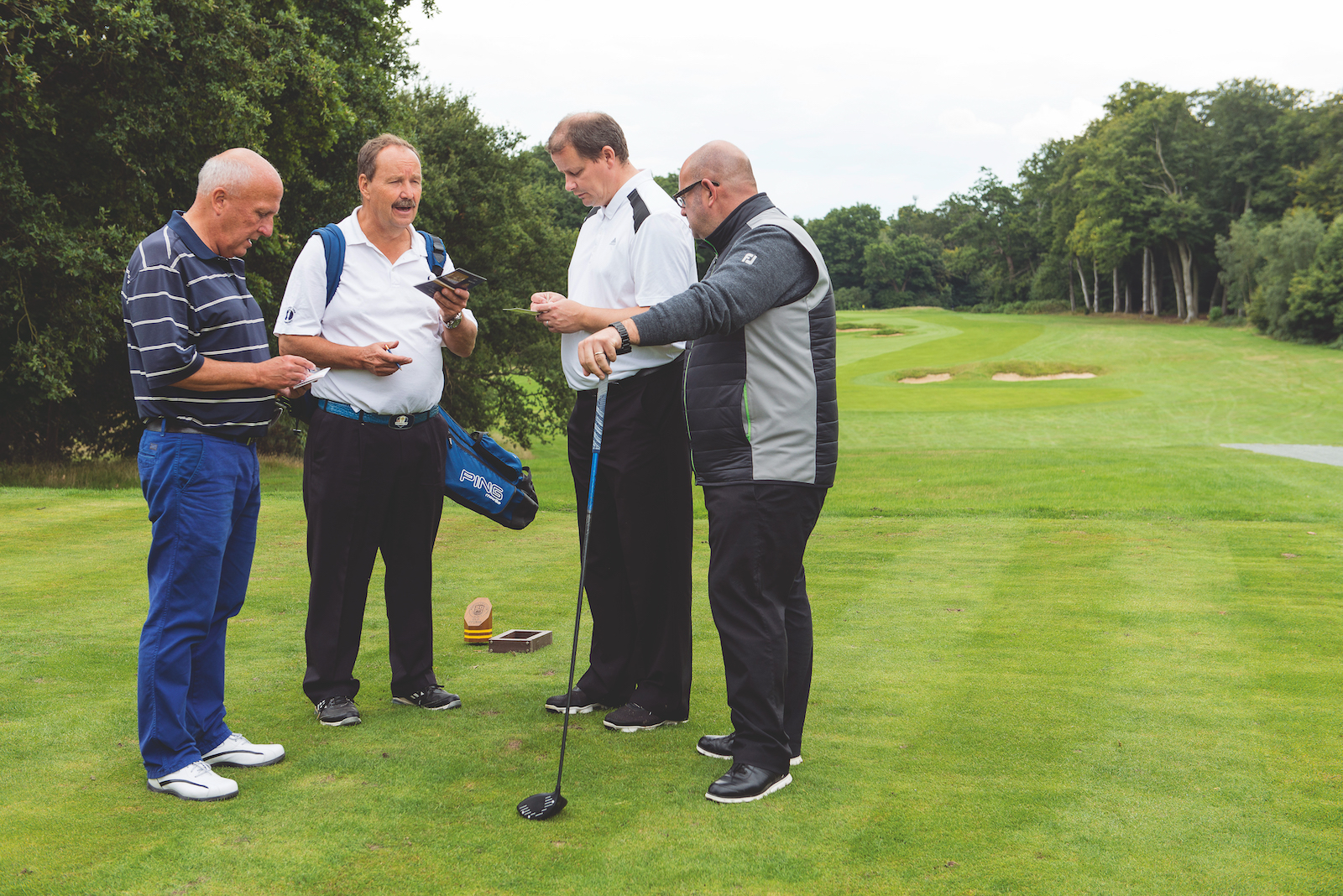
If the fairway or green is clear, the only priority on the next tee is for the person with the honour to be ready to hit – or anyone if you’re playing ‘ready golf’. There’s plenty of time to mark cards while others are hitting. So, if you know it’s you to go first, have your glove on ready to tee it up as soon as you get there. It’s frustrating for those behind to have to watch a group on the next tee standing around marking their cards rather than anyone actually stepping up and playing.
On your phone when it's your turn
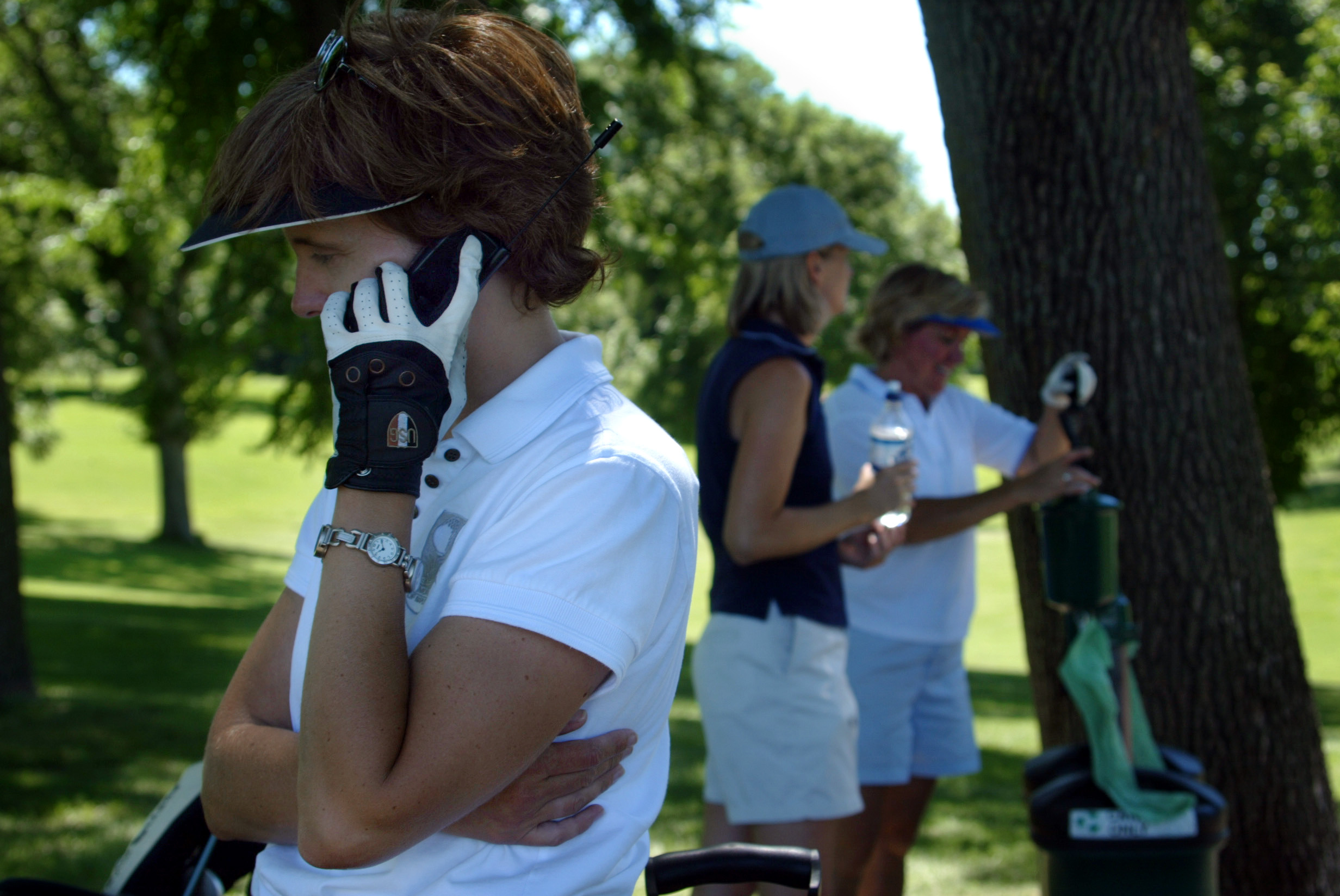
Most golfers these days accept that you might need your phone out on the golf course occasionally to keep on top of things discreetly if it doesn’t hold up play. But when you take things beyond that and end up being on the phone when it's your turn to play, that’s when other golfers’ patience levels begin to run out. If you absolutely have to use your phone occasionally, most people accept that; but it should never be when others are waiting for you to play your shot.
Excessive practice swings

Don’t take practice swings too far out on the golf course. Yes, many of us like to take a practice swing away from the ball to cement in our minds exactly what we’re trying to do. But no-one wants to see you taking swing after swing, especially if you’re taking a proper divot on every one and thus damaging the turf beyond that which is necessary for the shot in hand. All things in moderation is a good mantra for a lot of things – practice swings would definitely be among them.
Not sticking to the rules on call-up holes
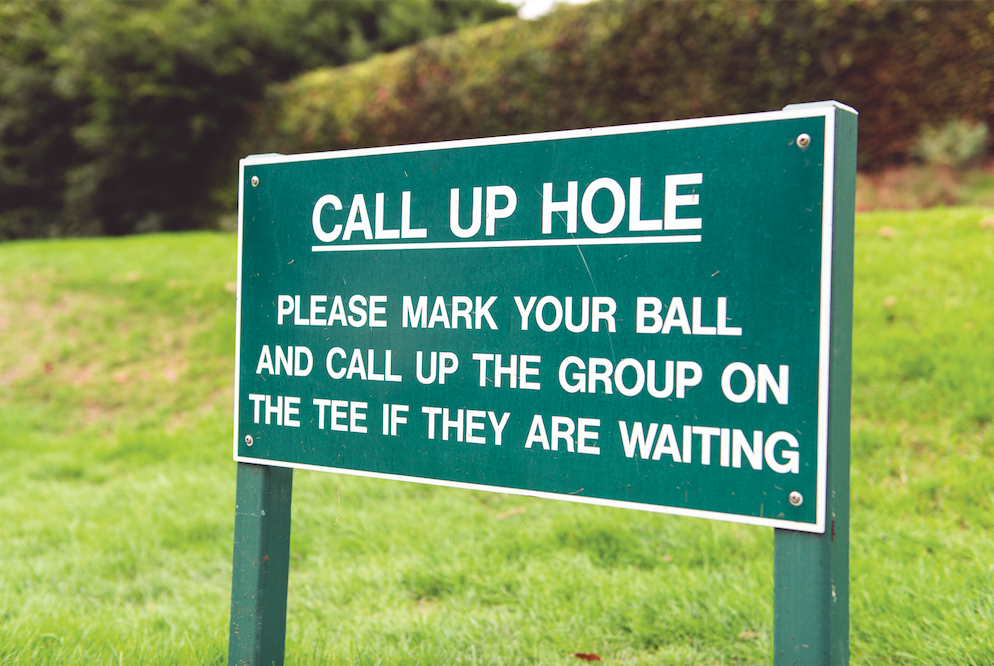
Call-up holes are typically either certain long par 3s or short par 4s where there’s a good chance that a number of golfers may be able to get somewhere up near the green off the tee. Their purpose is to keep play moving better on holes where, in reality, very few actually do hit the green and there is usually a lot of greenside work to be done. Where such holes exist, it only really works if everyone sticks to the script. So, always step aside and call up those behind on call-up holes.
Not watching playing companions' shots
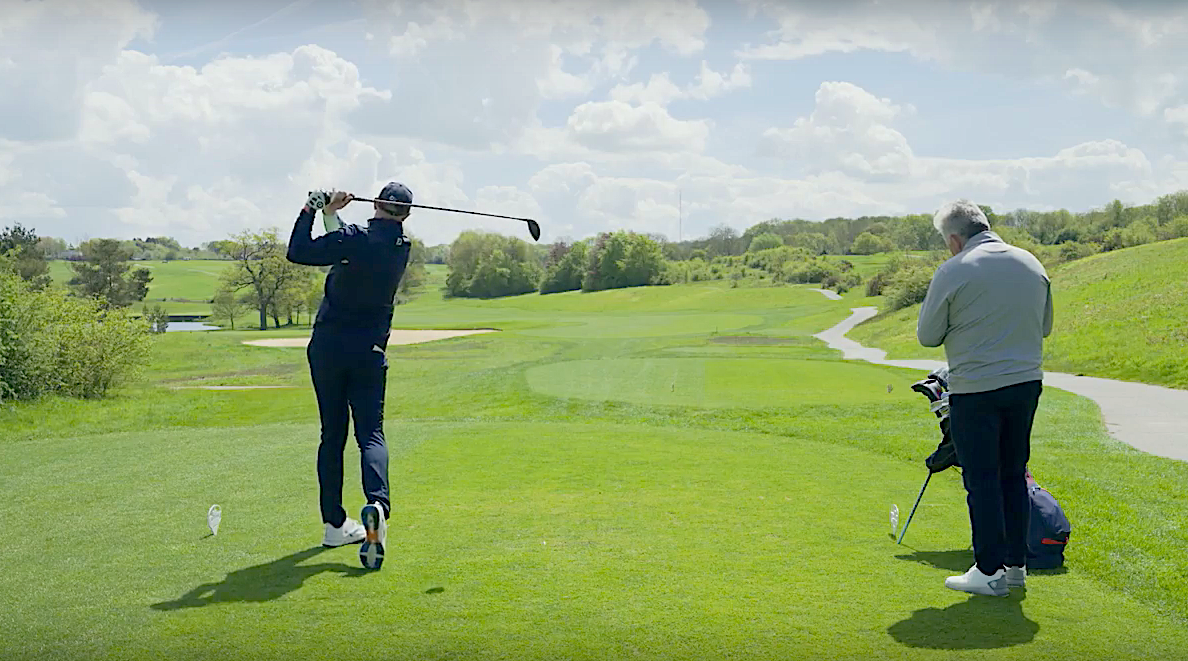
Following the flight of a golf ball if your eyesight is not the best or you’re playing straight into the sun can be difficult for the person playing the shot. The more pairs of eyes following the ball, the greater the chance of seeing where it went and finding it quickly. Always try to help fellow players follow the flight of their ball, especially from the tee where everyone is gathered around the same spot, but elsewhere too as and when circumstances allow.
Walking on someone’s line on the green
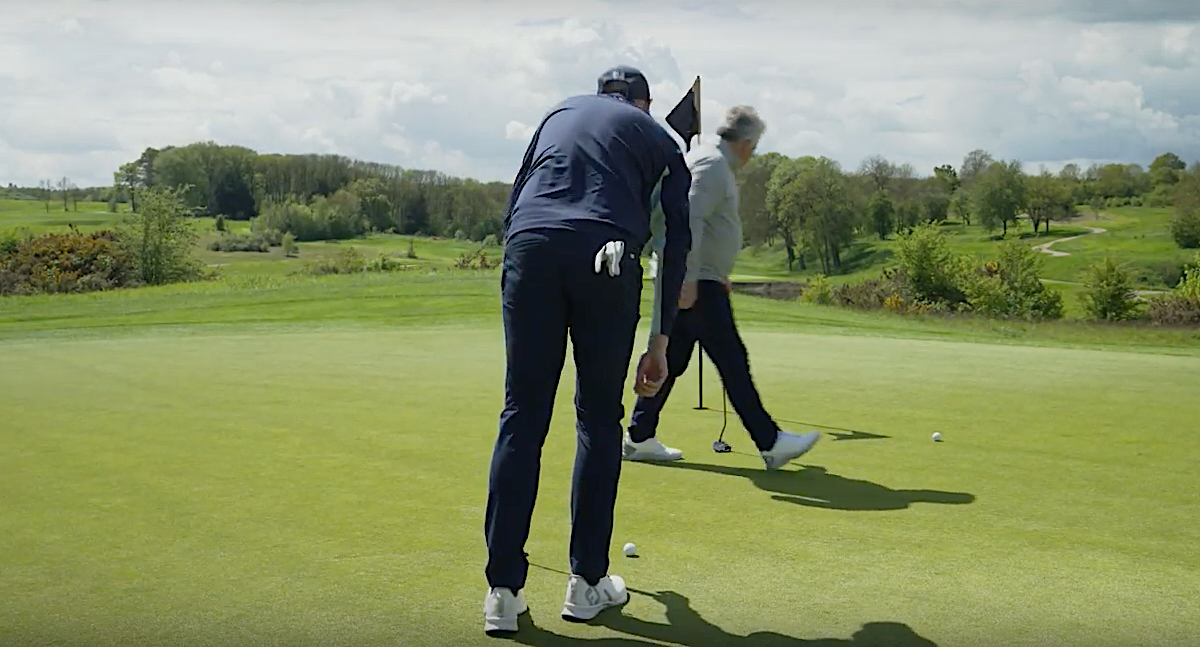
Spikeless and cleated golf shoes mean this is perhaps less of a practical issue than in the days of metal spikes. And yes, in firm conditions the chances of you damaging the line your playing companion is about to putt on are slim. But in soft conditions, it can make a big difference when footprints are taking a while to resettle, so it’s far more courteous just to avoid your playing companion’s line on the green completely and hope they will afford you the same courtesy.
Talking while someone is playing

Golf is an outdoor sport usually played in a quiet environment and when you’re preparing to play your shot every little audible distraction can be really off-putting. You might think you’re just whispering to your mate, but even that can be just enough to register with the golfer about to play. Yes, some golfers can be a little overly sensitive, but there’s plenty of time to talk during a round of golf, so no need to do so while someone else is hitting a shot.
Not watching your own shots all the way
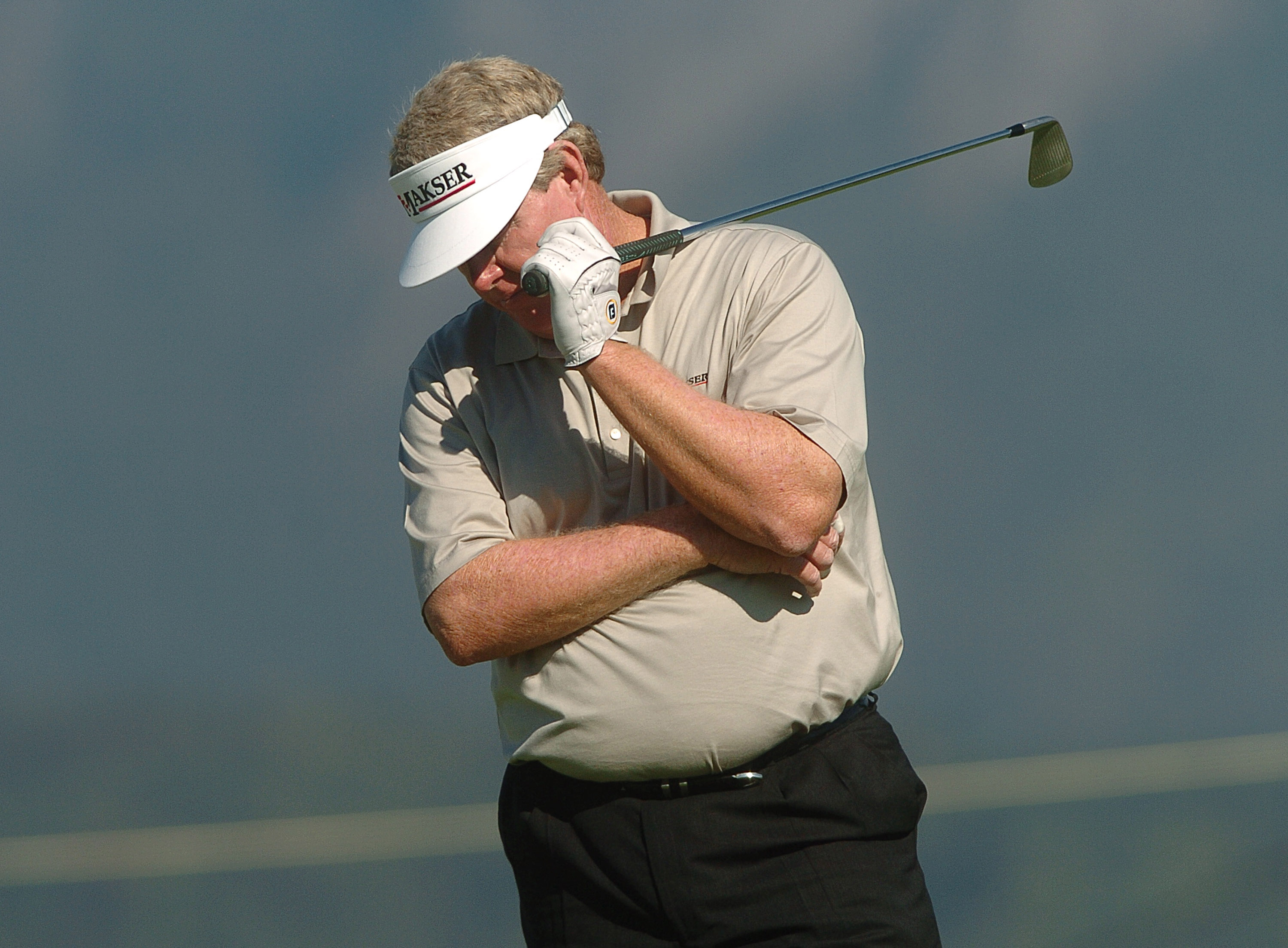
Golf is a frustrating game. A bad shot at a crucial moment can be too much to bear, and rather than following the errant shot closely, it’s all too easy to spin away in disgust. Unfortunately, at such times we’re actually best served by following the ball as closely as possible to give ourselves the best chance of finding it quickly. It’s not in the best interests of others in our group or those following if we have to spend extra time looking for a ball we didn’t really follow.
Overly long pre-shot routines

We’ve all played with people whose pre-shot routines go on forever and some of us may even have started to walk on a practice swing we’ve wrongly assumed simply must be the real thing! If your routine involves assessing the yardage, carefully selecting your club, standing behind the ball with club out in front of you, partial practice swings away from the ball to groove key moves, then three more adjacent to the ball before hitting, you’re unlikely to be the most popular player at your club!
Leaving your bag on the wrong side of the green
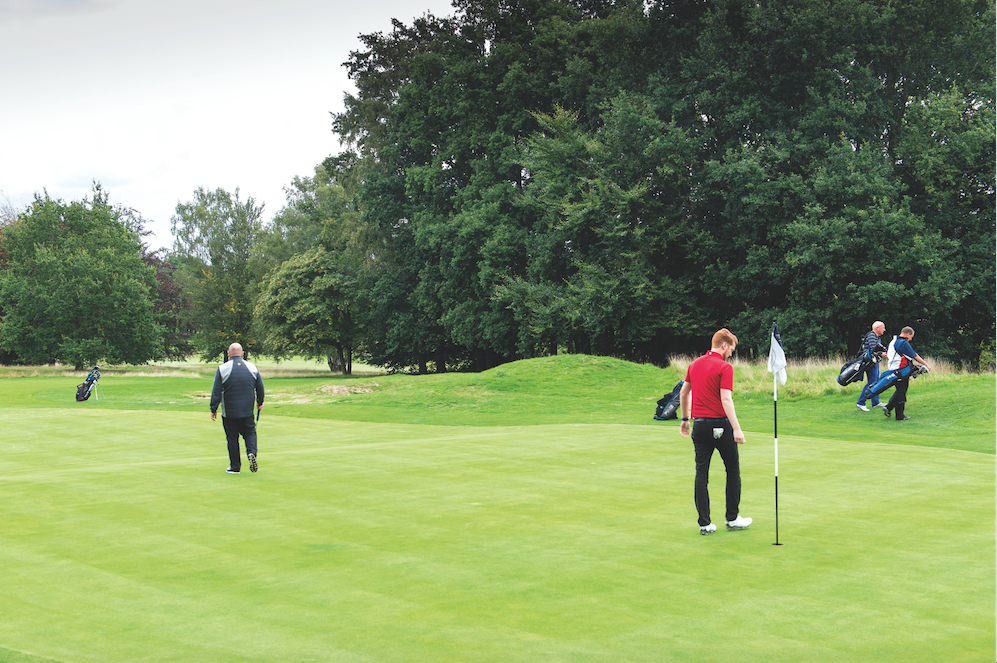
Try to leave your bag or trolley at the point where you’ll be exiting the green after putting out. Yes, sometimes you may not know a course well enough to know, or the logistics of where you’ve had to chip from or where trolleys are allowed to go may mitigate against it. But a good thought to have as you approach a green is, “Where am I heading next?” Leaving your bag on the wrong side delays your group and can be frustrating to watch for those behind.
Marking your scorecard on the green
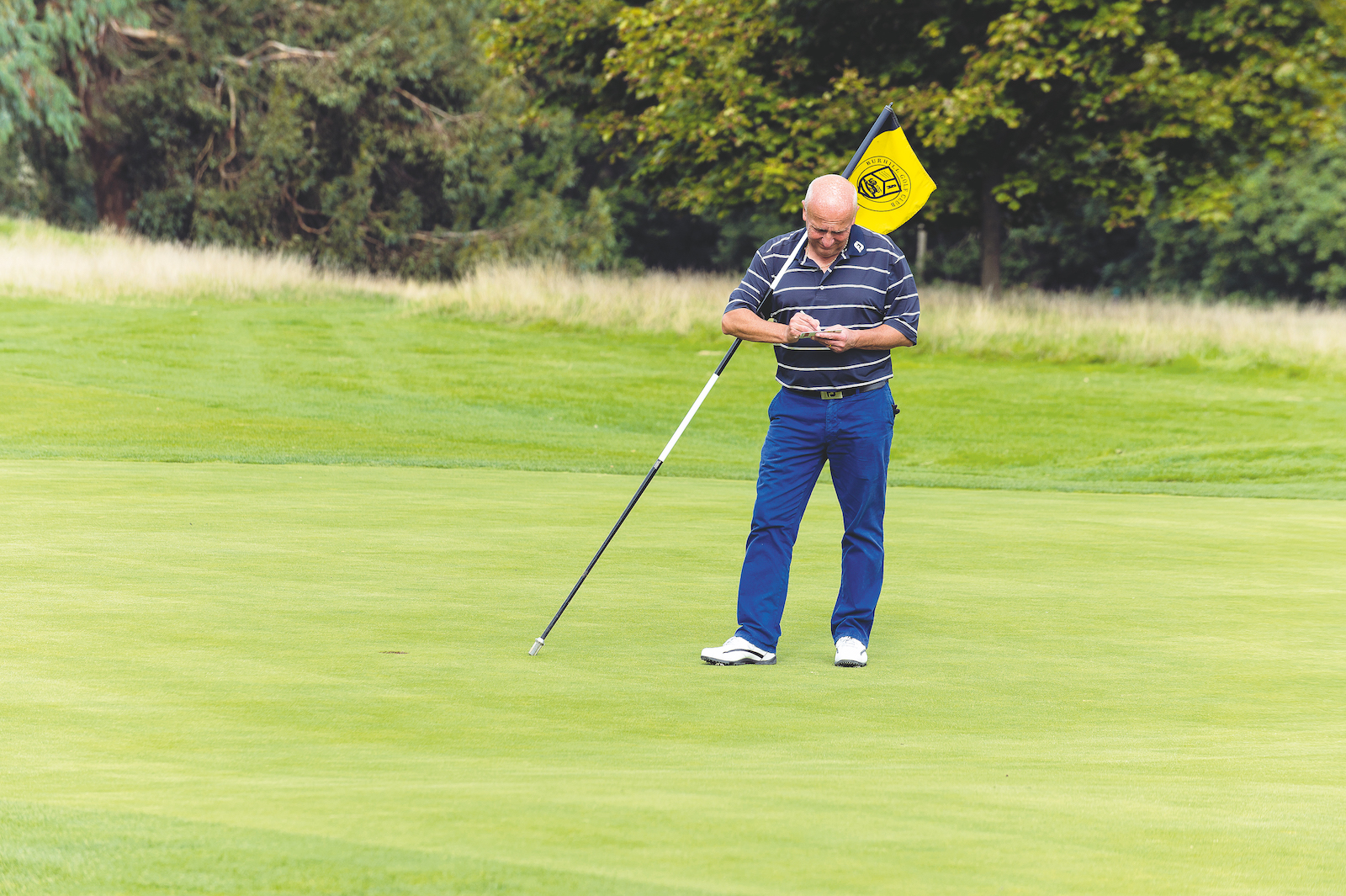
If you have to watch a scenario such as that depicted here while standing in the fairway waiting to play into that green, you’ll probably be wanting to scream, especially if the group ahead has been pretty slow anyway. There are plenty of opportunities to fill in your scorecard - on the green after you’ve putted out and before you’ve put the flagstick back in the hole is most definitely not one of them. Keep doing this and someone will eventually have a word with you!
Not helping others search
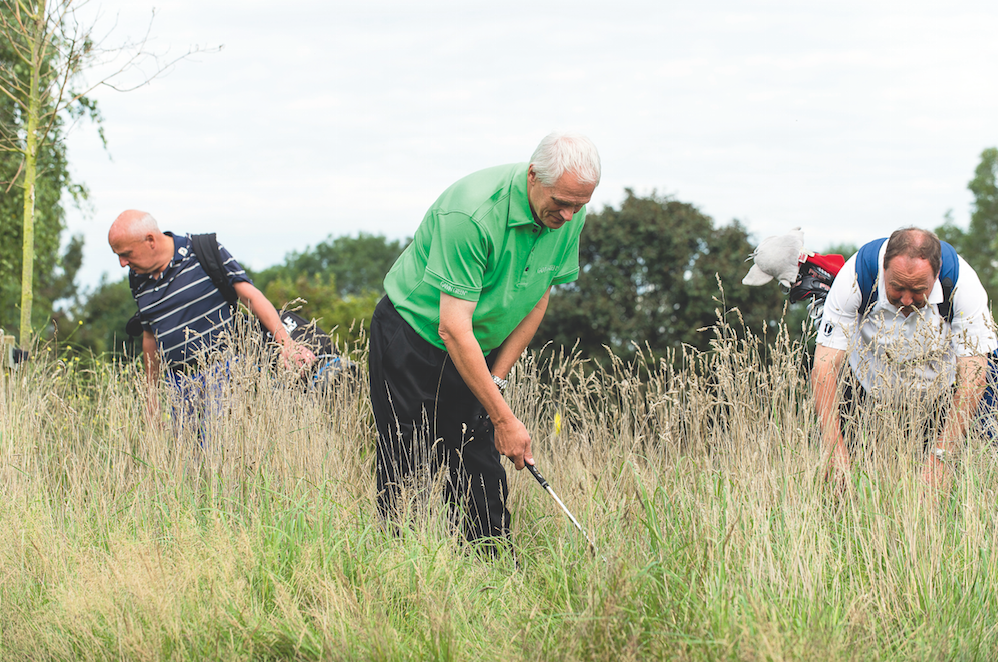
When you hit your ball into deep rough or somewhere where there is real doubt as to whether or not you will find it, you would hope that others playing with you would help you search as several pairs of eyes are better than one. So, when the boot is on the other foot, it’s only right that you help others search for their ball too. It’s only three minutes now, so not too arduous a task, and quite often if they're playing badly and their score is already gone they may curtail the search anyway to keep play moving.
Not letting faster players through

Letting faster players through keeps everyone happy, particularly on a less busy course where there is scope for them to then make good progress. There can be many reasons for not being quick – playing as a fourball, not playing well, being relatively new to the game and playing more shots. Whatever the reason, letting faster players through is better for all concerned. You’re not constantly looking over your shoulder, and faster players can enjoy their game at their preferred pace.
Taking your trolley on greens or tees
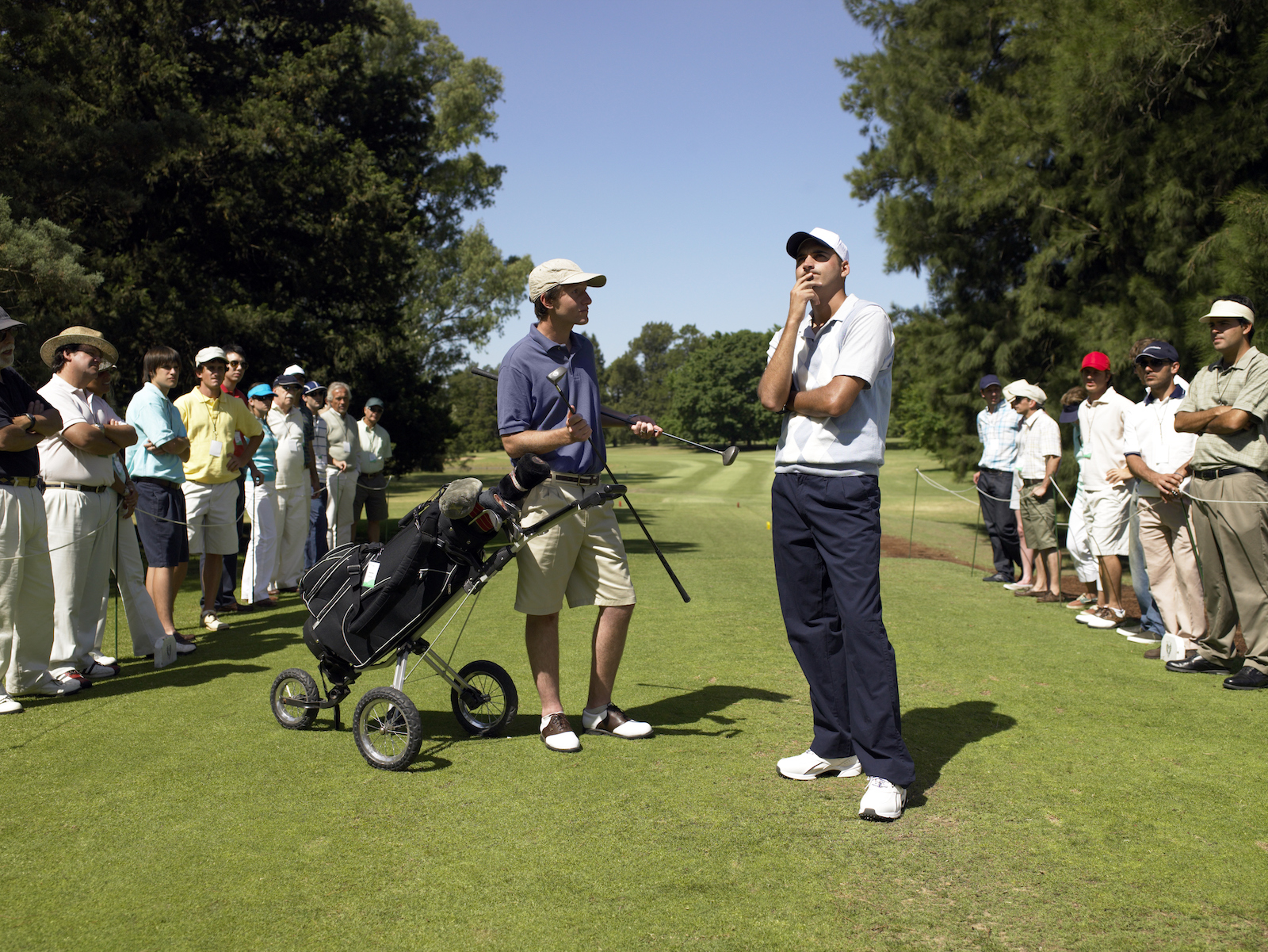
Greenkeepers spend hours and hours preparing greens and tees so they look and play as well as possible for golfers, so your trolley should be steering well clear of these areas. Admittedly, a handful of golf clubs – mostly high-end links and heathland courses blessed with firmer year-round conditions – aren’t worried about trolleys on tees, but the vast, vast majority of clubs are, so best to just lump tees in with greens as no-go zones for your trolley.
Going where greenkeepers don't want you to go

Greenkeepers are trying hard to make our courses as good as possible, which means there may be areas they really don’t want you walking or taking your trolley at certain times of year or sometimes all year round. If you see a roped-off area, a white line, a ‘trolleys this way’ sign or one asking you to keep out of the heather or an area that is healing or struggling to recover, don’t be tempted to ignore it because “one pair of feet or one trolley won’t really matter, will it?”
Not repairing pitchmarks
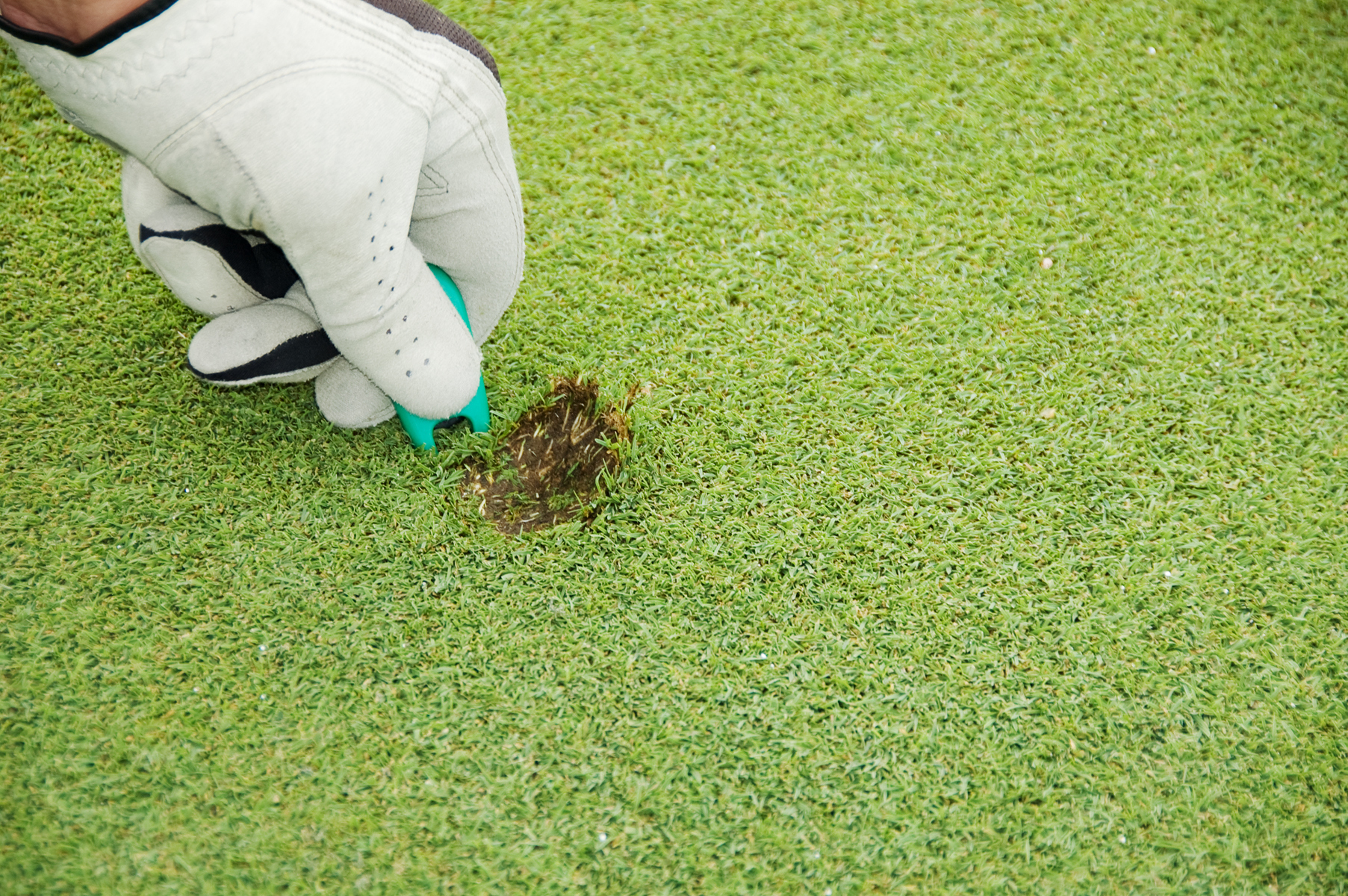
Every golfer will have walked onto a green – perhaps on a short par 3 or other hole where many are hitting wedges in – and been horrified at the number of unrepaired pitchmarks. There’s no excuse for it, especially in soft conditions when the golf ball can leave a bit of a crater. We all want good greens to look at and putt on, so repairing your pitchmarks should be second nature. Sadly, it isn't for everyone, so “make one, repair two” isn’t a bad mantra if you can do so without holding up play.
Not replacing divots

No free relief from divots is perhaps the number one Rules grievance for many, so it goes without saying that repairing the divots created by your shots should be second nature. For many it is; others are a little less diligent. Yes, sometimes the turf may disintegrate on impact and a divot may be hard to find. And yes, sometimes crows turn replaced divots back over in the search for food. But you should always replace your divots whenever possible, or use the divot mix often provided if you’re in a buggy.
Not raking bunkers
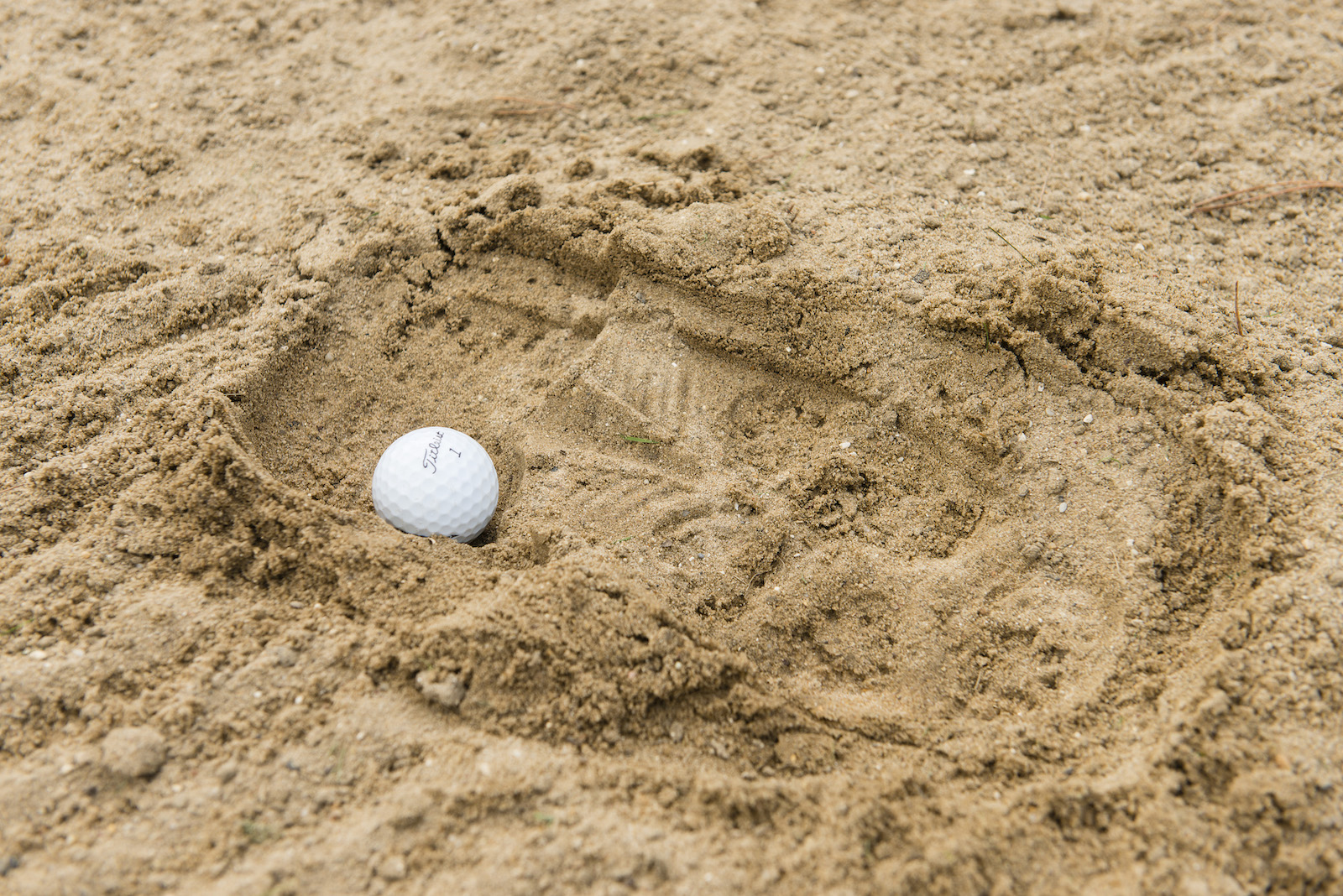
Walking into a bunker to find your ball in an unraked footprint is a pet peeve for all golfers, so it’s important to always rake where you have played from and trodden in a bunker out of courtesy to other players, and to care for the course. Many golfers find bunker shots testing enough from a good lie let alone a deep footprint! Every golfer should be doing his or her best to leave the bunker they’ve just played from in the condition in which they would hope to find it.
Not shouting 'Fore!’

Even average club golfers achieve ball speeds of well over 100mph, which means that every time you hit a full golf shot you are despatching a potentially dangerous rock-hard missile at high speed. When it's heading well offline towards other golfers or towards a hidden part of the course where other golfers might be, it goes without saying that you should yell ‘Fore!’ to warn them of the danger so they can take suitable evasive action if possible. Golf balls can injure people badly; a warning shout is absolutely essential.







